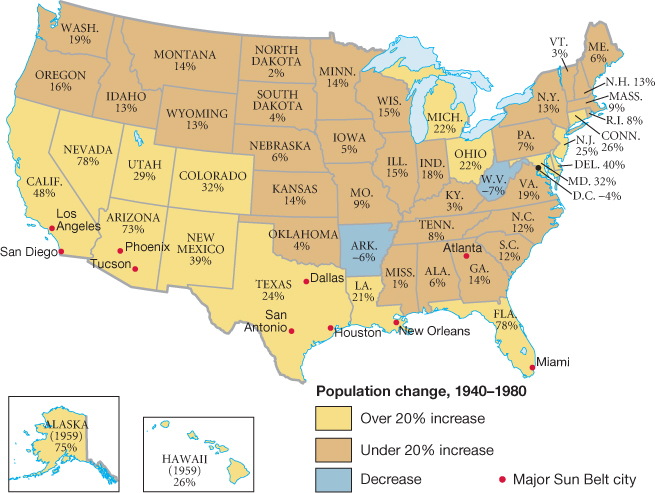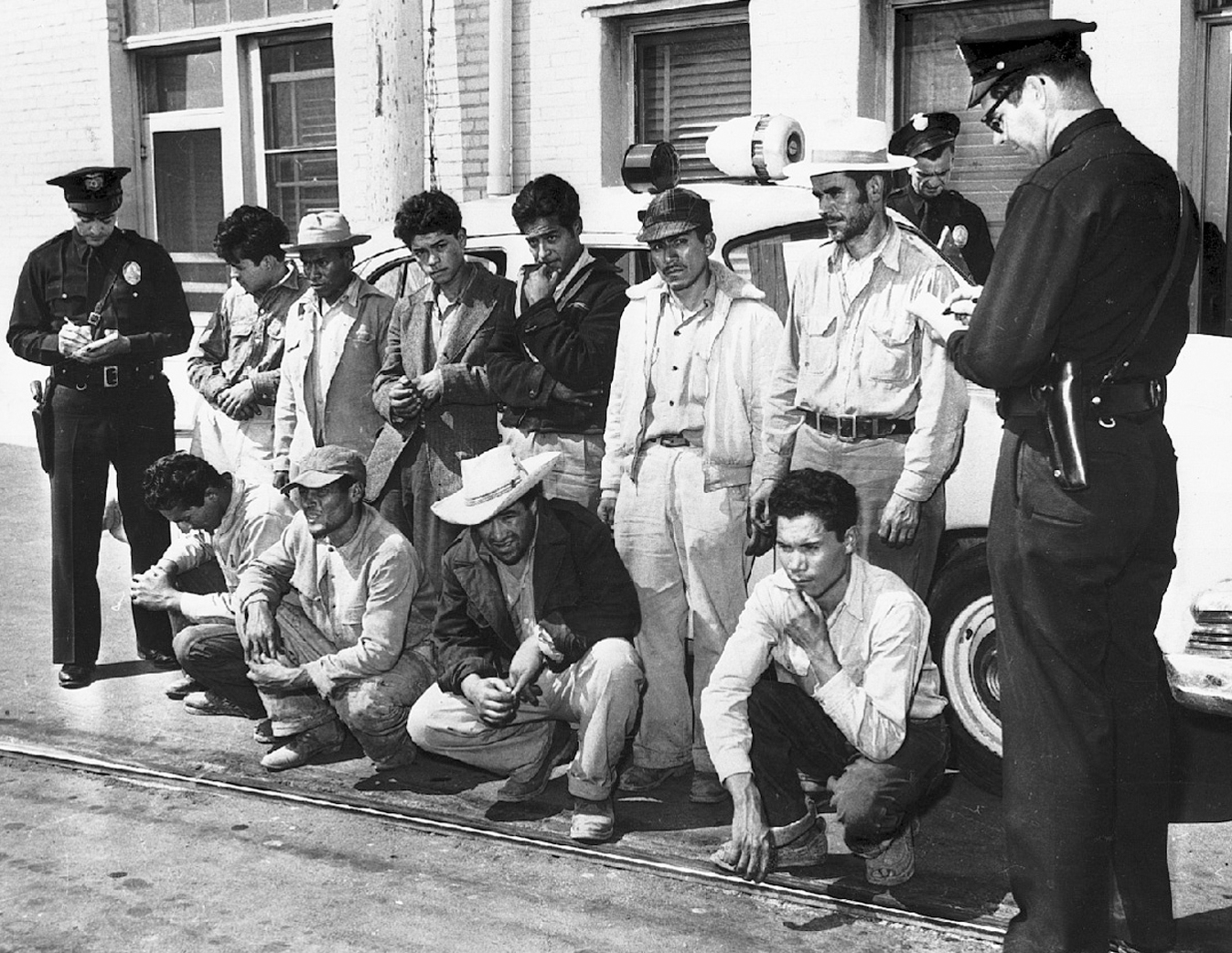The Rise of the Sun Belt.
Printed Page 750 Chapter Chronology
The Rise of the Sun Belt. No regions experienced the postwar economic and population booms more intensely than the South and Southwest (Map 27.2). California overtook New York as the most populous state. Sports franchises followed fans: In 1958, the Brooklyn Dodgers moved to Los Angeles, joined by the Minneapolis Lakers three years later.
A pleasant natural environment attracted new residents, but no magnet proved stronger than economic opportunity. As railroads had fueled western growth in the nineteenth century, so the automobile and airplane spurred the post–World War II surge. Air-conditioning facilitated industrial development and by 1960 cooled nearly eight million homes in the Sun Belt, which stretched from Florida to California.
Map Activity 2 for Chapter 27

Sun Belt
Name applied to the Southwest and South, which grew rapidly after World War II as a center of defense industries and non-unionized labor.
So important was the defense industry to the South and Southwest that the area was later referred to as the "Gun Belt." The aerospace industry boomed in such cities as Los Angeles and Dallas–Fort Worth, and military bases helped underwrite prosperity in cities such as San Diego and San Antonio. Although defense dollars benefited other regions, the Sun Belt captured the lion's share of Cold War spending. By the 1960s, nearly one of every three California workers held a defense-related job.
The surging populations and industries soon threatened the environment. Providing sufficient water and power to cities and to agribusiness meant building dams and reservoirs on free-flowing rivers. Native Americans lost fishing sites on the Columbia River, and dams on the Upper Missouri displaced nine hundred Indian families. Sprawling suburban settlement without efficient public transportation contributed to blankets of smog over Los Angeles and other cities.
The high-technology basis of economic development drew well-educated, highly skilled workers to the West, but economic promise also attracted the poor. "We see opportunity all around us here. ...We smell freedom here, and maybe soon we can taste it," commented a black mother in California. Between 1945 and 1960, more than one-third of the African Americans who left the South moved west.

The Mexican American population also grew, especially in California and Texas. To supply California's vast agribusiness industry, the government continued the bracero program begun in 1942, under which Mexicans were permitted to enter the United States to work for a limited period. Until the program ended in 1964, more than 100,000 Mexicans entered the United States each year to labor in the fields — and many of them stayed, legally or illegally. But permanent Mexican immigration was not as welcome as Mexicans' low-wage labor. In 1954, the government launched a series of raids called "Operation Wetback," sending more than a million Mexicans back across the border. At the same time, Mexican American citizens gained a victory in their ongoing struggle for civil rights in Hernandez v. Texas. In this 1954 case, the Supreme Court ruled unanimously that Mexican Americans constituted a distinct group and that their systematic exclusion from juries violated the Fourteenth Amendment guarantee of equal protection.
Hernandez v. Texas
1954 Supreme Court decision that found that the systematic exclusion of Mexican Americans from juries violated the constitutional guarantee of equal protection.
Free of the discrimination faced by minorities, white Americans enjoyed the fullest prosperity in the West. In April 1950, when California developers opened Lakewood, a large housing development in Los Angeles County, thirty thousand people lined up to buy houses at prices averaging $85,000 in 2012 dollars. Many of the new homeowners were veterans, blue-collar, and lower-level white-collar workers whose defense-based jobs at aerospace corporations enabled them to fulfill the American dream of the 1950s. A huge shopping mall, Lakewood Center, offered myriad products of the consumer culture, and the workers' children lived at commuting distance from community colleges and six state universities.